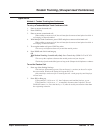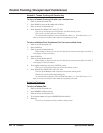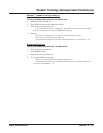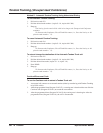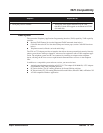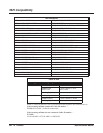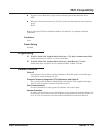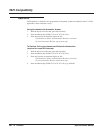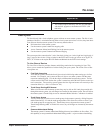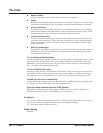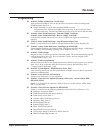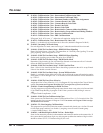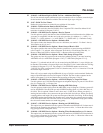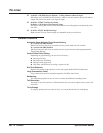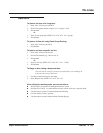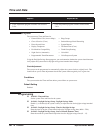
Tie Lines
Aspire Software Manual Features ◆ 561
Tie Lines
Description
Tie lines directly link a local telephone system with one or more remote systems. The link is inde-
pendent of the telco’s switched network. When a local system user seizes a tie line, they hear Inter-
com dial tone from the remote system. The user may then be able to:
● Dial extensions in the remote system
● Use the remote system’s trunks for outgoing calls
● Access Common Abbreviated Dialing bins in the remote system
● Use the remote system’s Internal and External Paging
The system provides connection for 2-wire (four lead, tip/ring) or 4-wire (eight lead, tip/ring/tip 1/
ring 1) type tie line circuits. Using switches on the PCB, each circuit type can be set as Type I, II,
III, IV, or V. Refer to the Aspire M/L/XL Hardware Manual for the PCB switch settings.
Tie Line Class of Service
Tie Line Class of Service provides features and dialing restrictions for incoming tie lines. This
allows you to control the capabilities of callers dialing into your system. The tie line Class of Ser-
vice options are:
● First Digit Absorption
A tie line can ignore (absorb) the first digit received, which helps when setting up a tie line
network. For example, your system can have tie lines to two other systems with the same
extension numbering plan. Use the first digit to differentiate between the systems. Tie line
callers can dial 3200-3456 for the first system’s extensions and 4200-4456 for the second sys-
tem’s extensions. The receiving system ignores the first digit and routes calls correctly to the
extension dialed (i.e., 4301 is received as 301).
● Trunk Group Routing/ARS Access
When a tie line user calls the remote system, they may be able to dial 9 and place outside calls
through the remote system. Any toll charges are incurred by the remote system. The call follows
the remote system’s Trunk Group Access or Automatic Route Selection - whichever is enabled
● Trunk Group Access
Tie line callers may be able to access trunk groups in the remote system by dialing Program-
mable Function Key *02 and the trunk group number. This allows the callers to select a spe-
cific trunk group for an outgoing call. Trunk Group Access bypasses the remote system’s
Trunk Group Routing/ARS. As with dial 9 access, any toll charges are incurred by the remote
system.
● Common Abbreviated Dialing
The remote system’s Common Abbreviated Dialing bins may be available to tie line callers. Use
this capability to set up centralized Abbreviated Dialing control - or just save time when dialing.
Aspire S Aspire M/L/XL
• Not Available. • Available.
• This feature requires the Basic NTCPU (P/N 0891002)
with the PAL upgrade or the Enhanced NTCPU (P/N
0891038).



